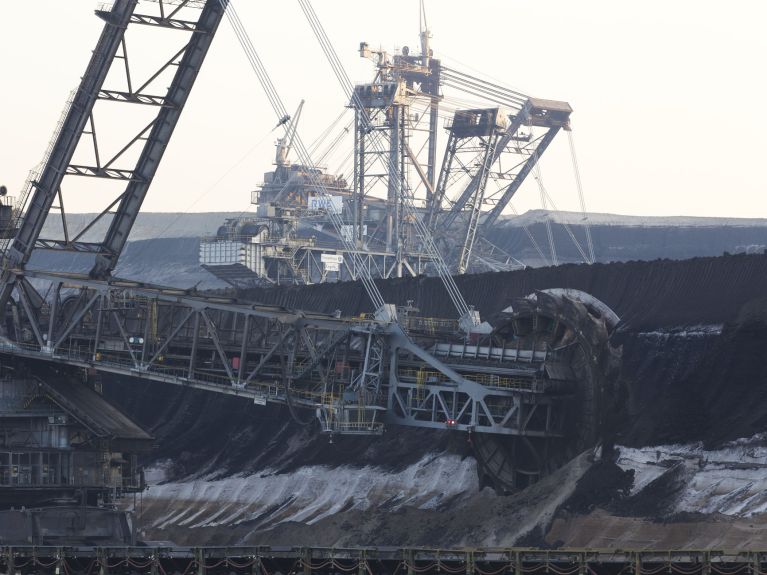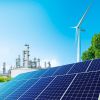How German energy providers are reinventing themselves
Electricity from the sun, wind and hydrogen: Germany’s energy sector is in the midst of a comprehensive transformation.

Electricity? That simply comes from the socket! Very few of us consider what makes it possible for our coffee machine to gurgle in the morning, the radio to play and our freshly charged smartphone to peep. Be it in industry, transport or a household – everything would come to a standstill without a reliable energy supply from a wide variety of sources. Electricity, heat and fuels are the lifelines of our modern society – especially in an industrial country like Germany. Here over 430 billion kilowatt hours of electricity from domestic production were fed into the electricity grid in 2024. Around 60 per cent of this originated from renewable energies – in particular wind power (31.5 percentage points), photovoltaics (14), biogas (7) and hydropower (5).
2,300 companies supply Germany with energy
The German energy sector is diverse: Some 2,300 large and small companies in the gas, electricity and district heating industries are actively involved in electricity generation, gas and coal production, energy storage, customer supply and network operation. The Federal Statistical Office reckons that total sales in 2021 amounted to 717 billion euros. The sector had almost 210,000 employees in 2024 and investments amounted to more than 32 billion euros.
The major players include RWE. Founded in Essen in 1898, Rheinisch-Westfälische Elektrizitätswerk AG (RWE AG) stands like no other company for the comprehensive transformation of the German energy industry. Germany’s successful industrial development was based for a long time on the use of fossil fuels – primarily lignite and hard coal for electricity generation. And thanks to RWE the Ruhr region around Essen was for decades the centre of German coal mining and industry.

Phase-out of nuclear energy
A significant role was also played by nuclear energy with at times up to 37 reactors in Germany. Here too RWE was among the largest operators. Albeit the reactor disasters at Chernobyl in 1986 and Fukushima in 2011 intensified public scepticism towards the technology. The German government ultimately decided on a gradual phase-out, with the last nuclear power plant going offline in April 2023 – a paradigm shift. Added to this are the energy policy consequences of Russia’s war of aggression against Ukraine. The German economy benefited from importing fossil fuels from Russia for many years, especially cheap gas. The German government’s declared objective since 24 February 2022 is to minimise imports to zero.
Germany wants to become climate neutral
Environmental awareness among Germans has grown steadily since the 1970s. And the energy transition, in other words the switch to a sustainable energy supply, has for several decades been a key German policy objective. This firstly means a significant reduction in fossil fuels: The proportion of coal-fired generation was still 22.5 per cent in 2024, so the German government decided in 2020 to gradually phase out coal by 2038 at the latest. Secondly, renewable energies are to be massively expanded; their share of electricity consumption will rise to at least 80 per cent by 2030. In March 2025, the target of climate neutrality by 2045 was even enshrined in the German constitution in association with planned infrastructure investment.

RWE: from fossil to pioneer
Many German energy companies had to reinvent themselves due to the shift in underlying political conditions. RWE, formerly a symbol of fossil fuel energy generation, is now positioning itself as a pioneer in sustainability. “Our most important technologies include offshore and onshore wind farms, solar power arrays, battery storage systems and gas-fired power stations. We have almost 150 projects under construction across all technologies and countries with a total capacity of 12.5 gigawatts”, explains RWE CEO Markus Krebber. The group is for instance planning the so-called North Sea Cluster in the German waters of the North Sea, four offshore wind parks with a total output of some 1.6 gigawatts. The first two parks should be operational as early as 2027. The company is also collaborating with partners in the United Kingdom, Denmark and the Netherlands to realise offshore projects on a grand scale.
In addition to wind energy, RWE is increasingly relying on hydrogen technologies. The company has commissioned a 14-megawatt electrolysis pilot plant to produce green hydrogen at its Lingen facility. RWE is also planning in the context of the “GET H2 Nukleus” initiative to construct a 300 megawatt electrolysis plant, part financed by public funding of over 490 million euros.

E.ON invests 43 billion euros
Also E.ON – one of Europe’s largest energy companies with 75,000 employees, 47 million customers and an energy distribution network spanning 1.6 million kilometres – is involved in implementing Germany’s hydrogen strategy and is driving forward the energy transition in a variety of ways. The company wants to invest 43 billion euros Europe-wide in the requisite modernisation of infrastructure by 2028. In doing so, its management is setting out clear demands to political decision makers: They need to move away from “detail targets spanning decades and towards an agile, market-oriented and pragmatic energy policy”, says Thomas Birr, Chief Strategy Officer at E.ON. Electrification is the most efficient way to reduce emissions. This expected to result in a 30 per cent increase in EU-wide electricity demand by 2035, according to Birr. It would require “optimised use of resources”, intelligent and digital extension of networks and “better synchronisation with the expansion of renewable energy”.

Economy pins hopes on new Minister
Many German energy companies are pinning their hopes on new Federal Minister for Economic Affairs and Energy Katherina Reiche. “The ambitious expansion of renewable energies remains crucial – but they must in future be even better integrated into the overall system”, says Kerstin Andreae, Chairperson of the German Association of Energy and Water Industries (BDEW). The future importance of natural gas could increase; it accounted for just under 15 per cent in 2024. Right at the start of the federal government in early May 2025, Reiche announced the construction of new gas-fired power stations with a capacity of at least 20 gigawatts to ensure security of supply in Germany. “We need flexible gas-fired power stations that can supply electricity when the wind isn’t blowing and the sun isn’t shining. And we need them quickly”, said the Minister.

